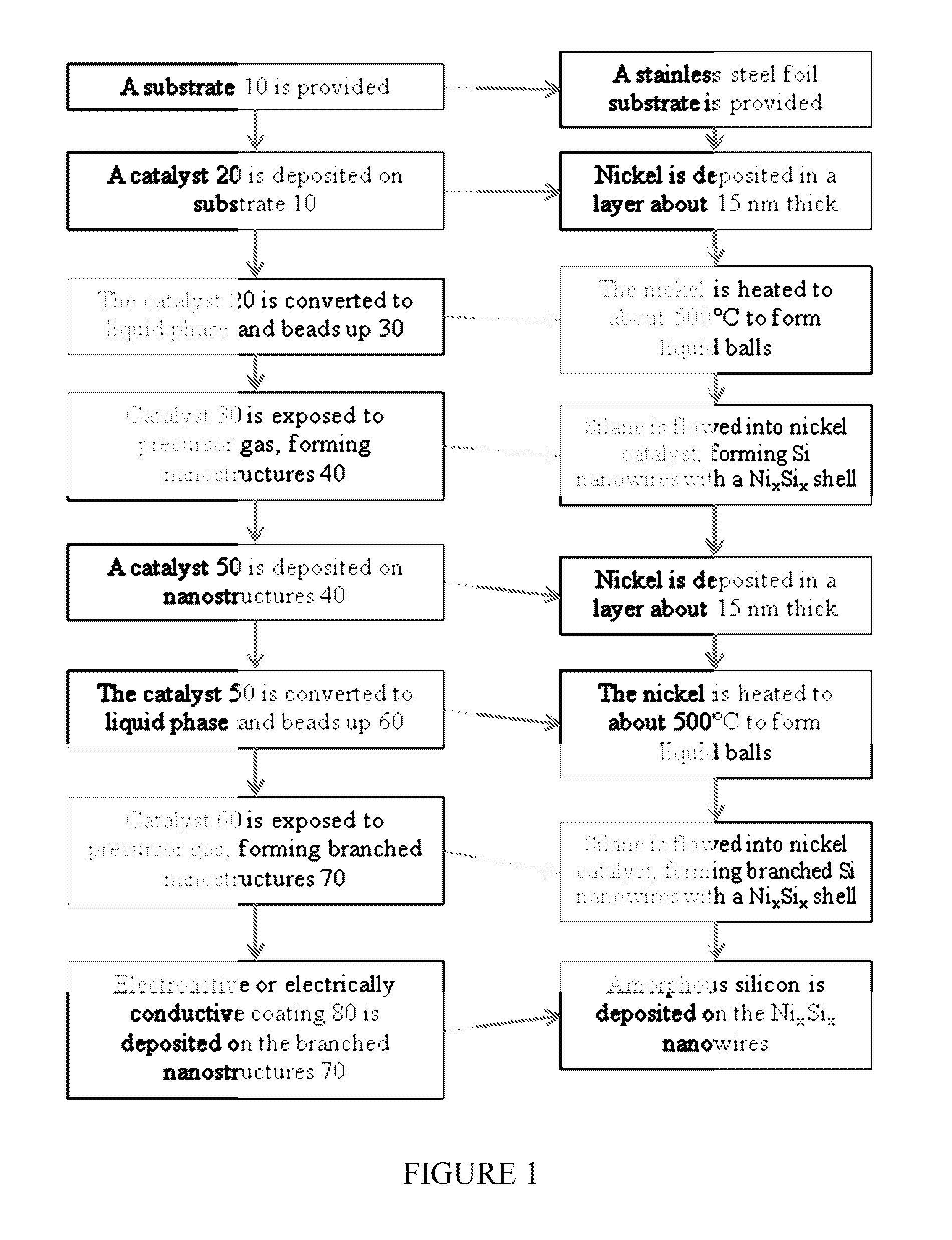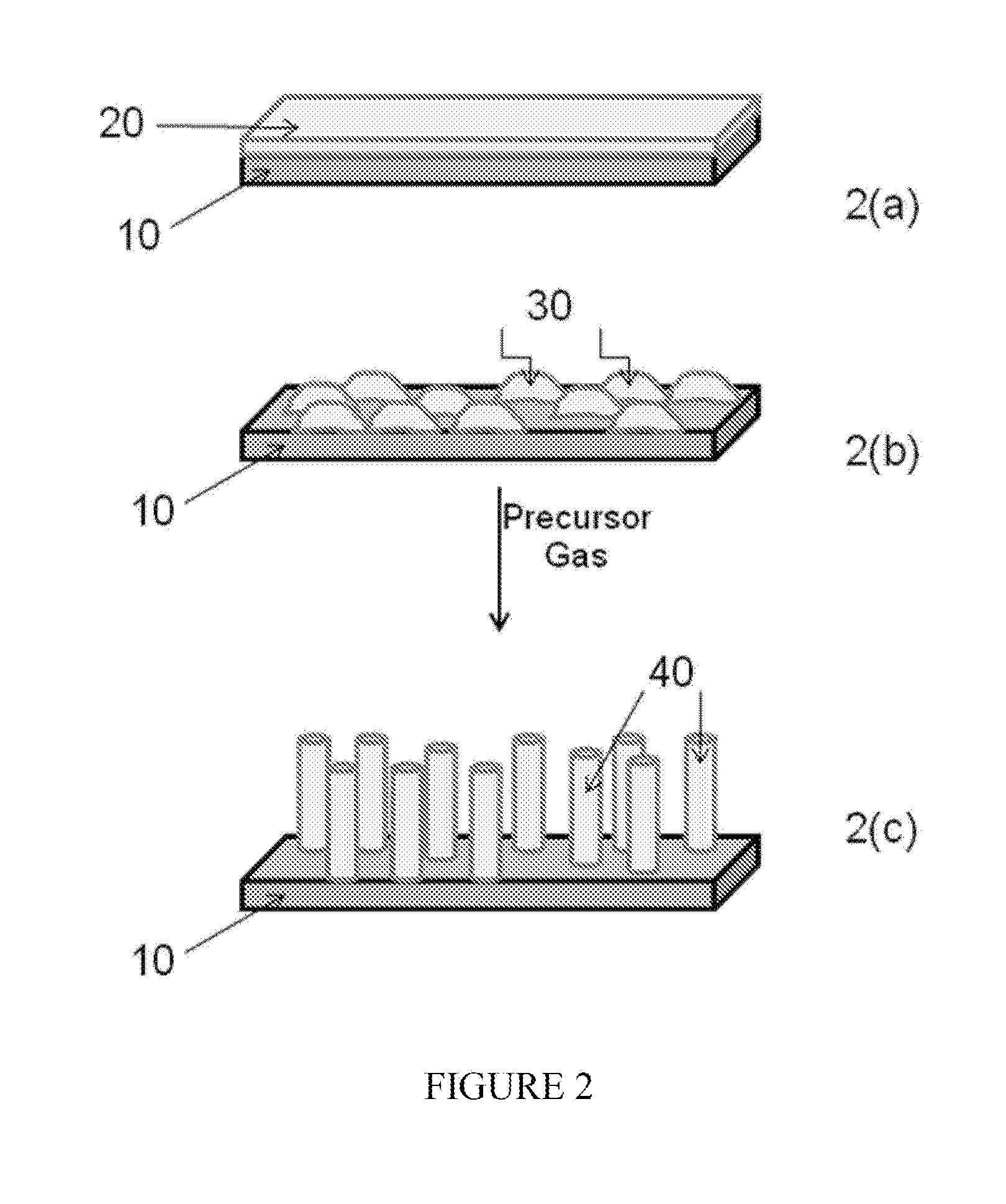Branched nanostructures for battery electrodes
a battery electrode and nanostructure technology, applied in the field of electrochemical electrodes, can solve the problems of poor energy storage and battery performance, and achieve the effect of reducing the stress of lithium-ion insertion and reducing the stress of battery electrodes
- Summary
- Abstract
- Description
- Claims
- Application Information
AI Technical Summary
Benefits of technology
Problems solved by technology
Method used
Image
Examples
example 1
[0049]Anode substrate material for a lithium ion battery consisting of silicon nanowires grown through a vapor liquid solid (VLS) growth process, where the catalyst used was nickel.
[0050]The nickel catalyst layer is deposited onto a current collector foil (using stainless steel foil) in a physical vapor deposition (PVD) e-beam evaporator with a base pressure of 1×10−6 and sample at room temperature. The deposited nickel layer is roughly 15 nm thick, with 99% purity.
[0051]The sample is placed into a horizontal hot walled chemical vapor deposition (CVD) furnace where the current collector substrate and catalyst layer is heated up to 500° C. under a flow of 200 sccm of argon and a base pressure of 100 Torr. The high temperature causes the catalyst layer to change into liquid phase and bead up into liquid balls. After the temperature has stabilized at 500° C. argon continues flowing at 200 sccm and a base pressure of 100 Torr for 10 more minutes. After 10 minutes the gas flow is switche...
PUM
| Property | Measurement | Unit |
|---|---|---|
| thickness | aaaaa | aaaaa |
| thickness | aaaaa | aaaaa |
| thickness | aaaaa | aaaaa |
Abstract
Description
Claims
Application Information
 Login to View More
Login to View More - R&D
- Intellectual Property
- Life Sciences
- Materials
- Tech Scout
- Unparalleled Data Quality
- Higher Quality Content
- 60% Fewer Hallucinations
Browse by: Latest US Patents, China's latest patents, Technical Efficacy Thesaurus, Application Domain, Technology Topic, Popular Technical Reports.
© 2025 PatSnap. All rights reserved.Legal|Privacy policy|Modern Slavery Act Transparency Statement|Sitemap|About US| Contact US: help@patsnap.com



